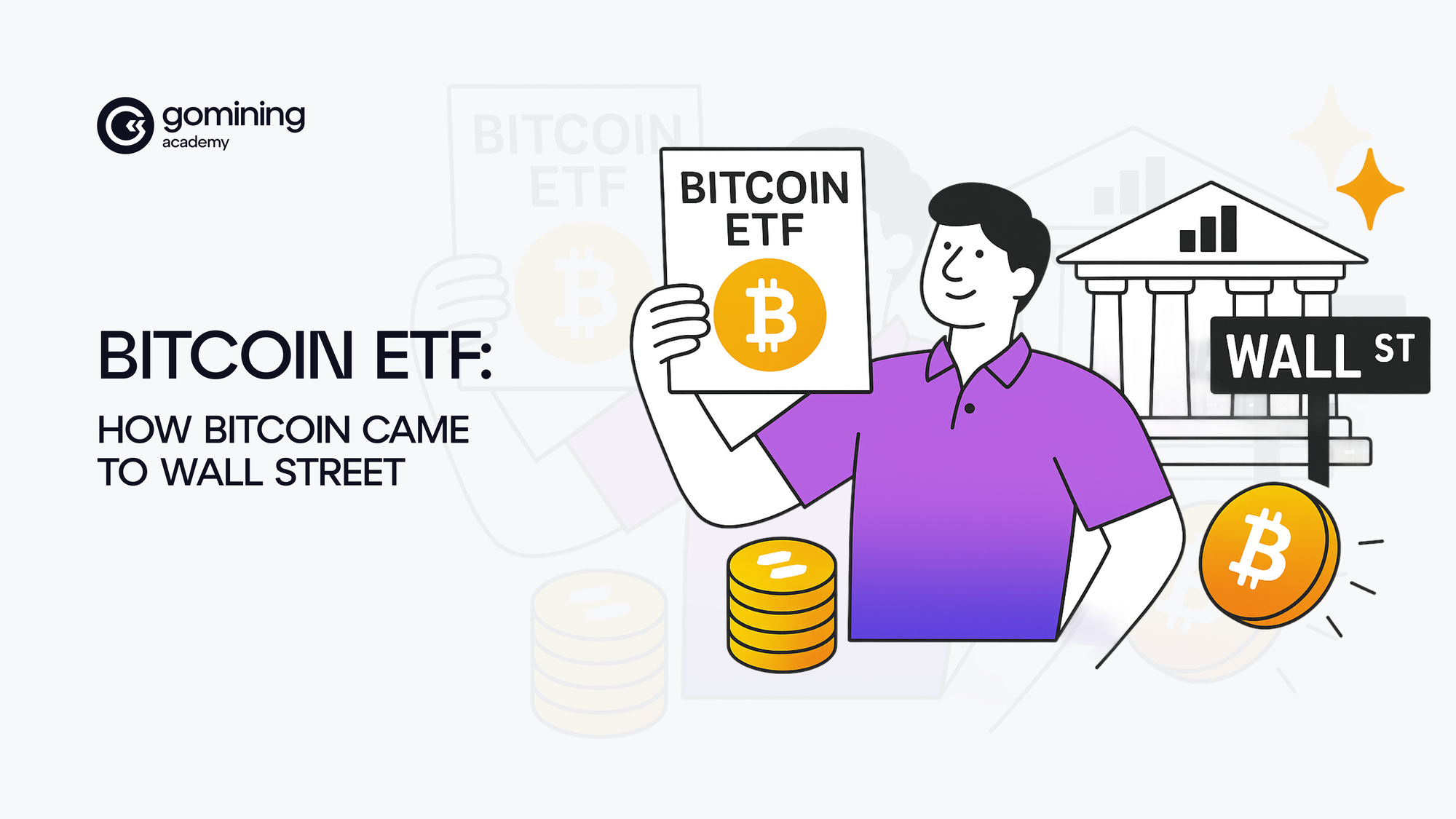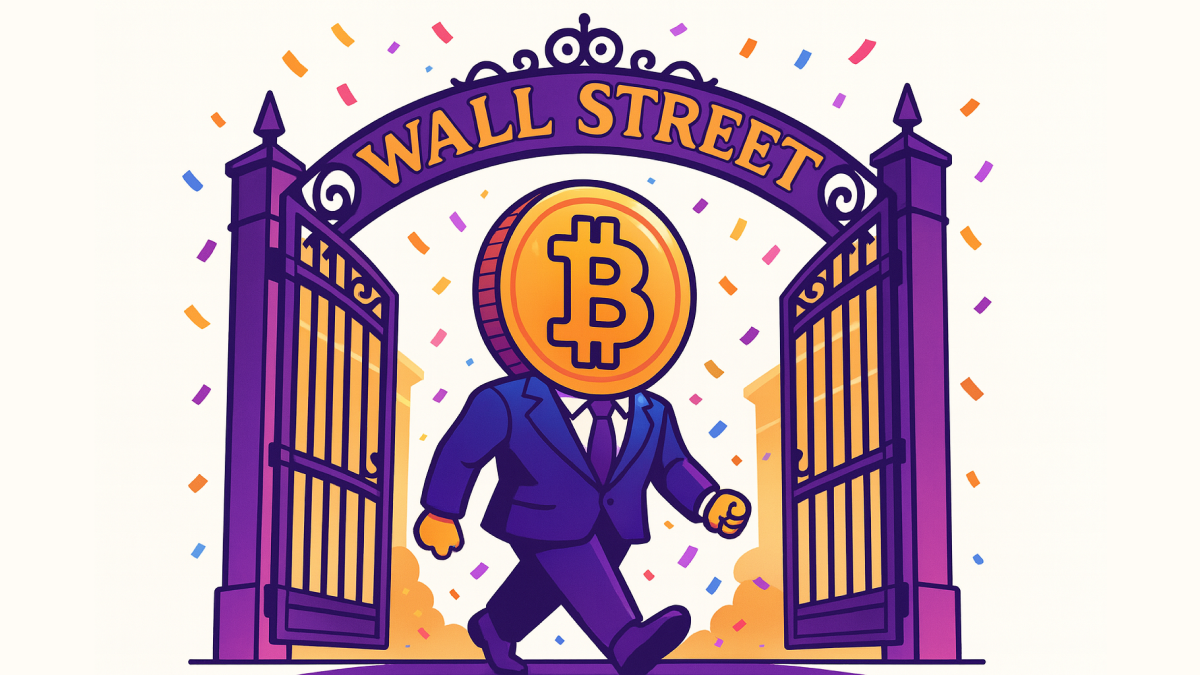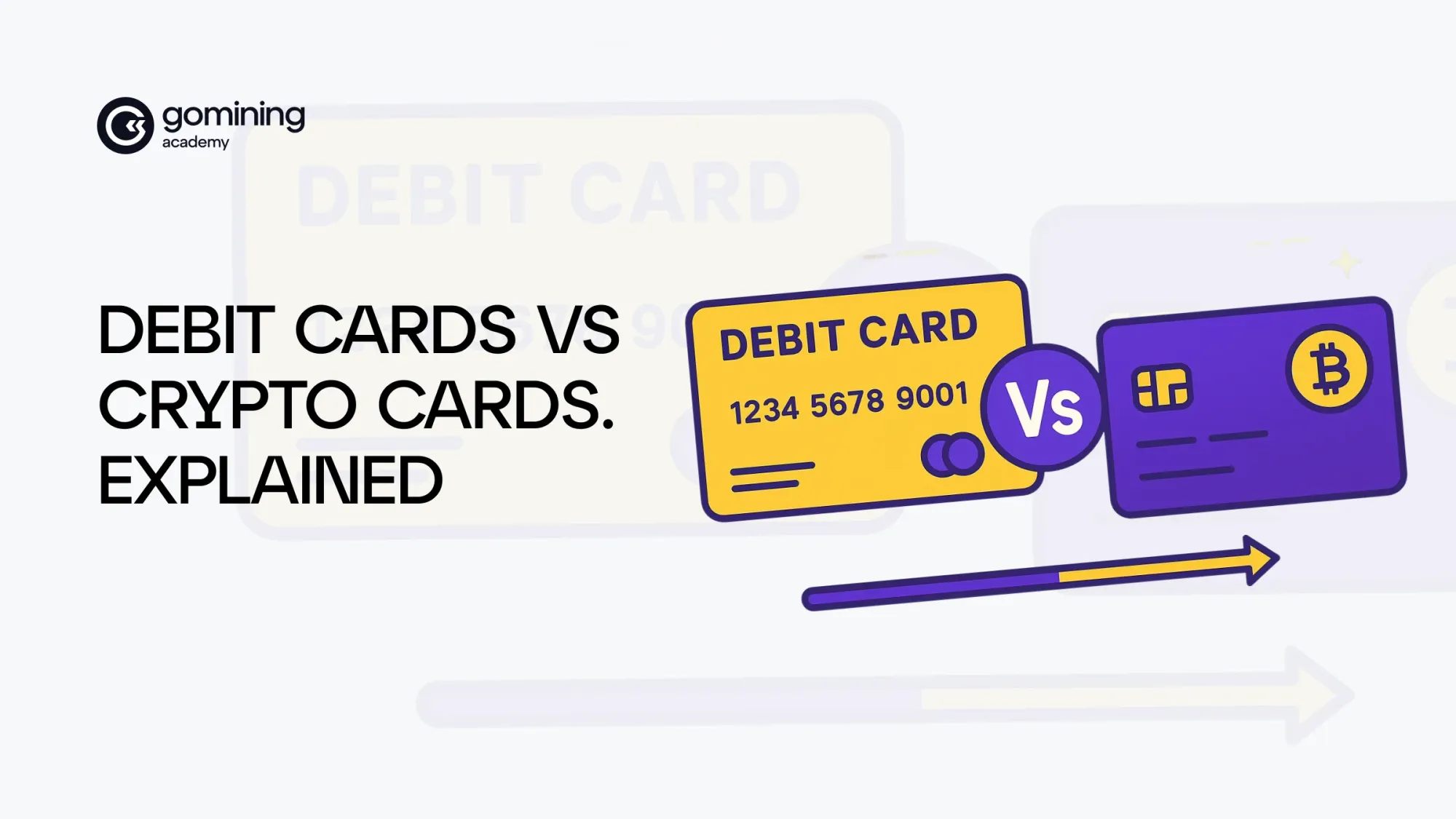Bitcoin ETF: How Bitcoin Came to Wall Street

Bitcoin just got a Wall Street makeover—and it’s turning heads.
With the launch of Bitcoin ETFs, what was once the Wild West of internet money is now sipping cocktails with institutional investors.
But what is a Bitcoin ETF, and why is everyone on Wall Street suddenly paying attention?
Table of Contents
- What is Bitcoin ETF – Bitcoin in a Suit
- Bitcoin Value Over Time
- Bitcoin ETF Approval
- What Are ETFs
- How Do Bitcoin ETFs Work
- Spot Bitcoin ETFs
- Why Bitcoin Spot ETFs Are a Big Deal
- Bitcoin ETFs: Taming the Wild Child of Finance
- How to Invest in ETFs

What is Bitcoin ETF? Bitcoin in a Suit
ETF stands for Exchange Traded Funds—but for Bitcoin, the most important letters in ETF are the first two: “ET,” which stands for “Exchange Traded”. That’s just a fancy way of saying you can buy and sell shares on a stock exchange (like the NYSE or Nasdaq), just like you would with Apple or Tesla.
When Bitcoin became an ETF, it meant investors could trade a Bitcoin ETF on the stock market whenever the market is open. And most importantly, it finally opened the door for institutional investors to buy Bitcoin as easily as they’d buy traditional stocks in the form of Bitcoin ETF.
Bitcoin Value Over Time
Bitcoin over time has earned its reputation as “digital gold”—and for good reason. Like gold, it’s scarce, durable, and doesn’t rely on any government to hold its value. But unlike gold, Bitcoin moves at internet speed. No vaults, no shipping delays—just borderless value on the blockchain.
While some people still think it’s just internet magic beans, others see it as a hedge against inflation, a long-term store of value, or simply a rebellious addition to a very buttoned-up portfolio.
The problem? Buying actual Bitcoin means figuring out wallets, seed phrases, and making sure you don’t lose your keys (literally). That’s where a Bitcoin ETF comes in—it’s like ordering the Bitcoin experience à la carte from a menu you already know: Wall Street.
No cables. No cold wallets. Just exposure to an asset that’s been moonwalking through markets for over a decade—with one click.
Bitcoin ETF Approval
But Bitcoin didn’t become an ETF overnight—it took a long stretch of back-and-forth between crypto companies and U.S. regulators, such as the Securities and Exchange Commission SEC. For the better part of a decade, Bitcoin stood outside the gates of Wall Street like a rebellious teenager in a leather jacket.
The big concern was that Bitcoin was too risky, too volatile, and too easy to manipulate. Regulators worried about wild price swings, shady offshore exchanges, and a lack of investor protections. It didn’t help that Bitcoin was often linked to headlines about scams, hacks, and Silk Road-type dramas. Wall Street likes predictability—and Bitcoin, back then, looked more like a rollercoaster with no seatbelts.
But over time, the landscape began to shift. The cryptocurrency market started to mature. Major financial institutions like BlackRock and Fidelity began dipping their toes—and then their entire legs—into the crypto pool. This has increased the number of people and institutions who hold huge amounts of Bitcoin.
Bitcoin futures launched on regulated exchanges. Custody solutions improved. Transparency and compliance measures were introduced. And perhaps most importantly, a clearer regulatory framework began to take shape, slowly turning Bitcoin from a rebel asset into something institutional investors could actually work with. The result? Bitcoin cleaned up just enough to get invited to the Wall Street dance—as an ETF.
The long-awaited Bitcoin ETF approval date arrived on January 10, 2024, when the U.S. finally gave the green light to Bitcoin ETFs. This landmark decision marked Bitcoin’s formal debut on the stock market—not as a speculative startup or just a digital asset, but as a sophisticated, regulated investment product: the Exchange-Traded Fund (ETF). At last, Bitcoin had earned its place at the Wall Street table.
This innovation fundamentally transformed accessibility. Now, anyone can invest in Bitcoin through a conventional brokerage account—no need for specialized technical knowledge, private keys, or crypto wallets. With Bitcoin ETFs, investing became as simple as buying a stock.
What Are ETFs?
Think of an ETF as a ready-made combo meal: one click gets you a whole basket of assets instead of ordering each ingredient separately. Whether that basket holds tech stocks, bonds—or now, Bitcoin—the benefit is the same: instant diversification and stock-market convenience.
Let’s say the combo includes a bit of Apple, some Microsoft, a pinch of gold, and a drizzle of real estate. One ETF share gives you exposure to all of them at once.
Or if you’re into visuals: imagine a fruit basket. Each fruit represents a different investment. Buying one ETF share is like taking a bite out of the whole basket. If one fruit spoils, the others might still be sweet—and that mix helps spread your risk.
How Do Bitcoin ETFs Work?
As crypto matured and tried to shed its Wild-West reputation, it finally found a way into the Wall Street club—via exchange-traded funds (ETFs), or simply traded funds.
Not all crypto ETFs are big, diversified baskets. In fact, most are more like a single shiny apple than a full fruit salad. Especially in the U.S., these ETFs tend to focus on just one asset—usually Bitcoin or Ethereum. So while the “basket” analogy still helps explain what an ETF is, most crypto ETFs are really just one neatly packaged piece of fruit—wrapped, labeled, and stamped with a Wall Street barcode. The most prominent one is the Bitcoin Spot ETF. In other words, the poster child for “one neatly packaged piece of fruit” is the brand-new Spot Bitcoin ETF—so let’s zoom in on how that single apple trades like any other stock.
Trading Spot Bitcoin ETFs Like a Stock
The launch of the Spot Bitcoin ETF has marked a major turning point in how investors access the world’s most famous digital asset. Instead of relying on futures contracts or derivatives, a Bitcoin Spot ETF gives you exposure to actual Bitcoin held in secure custody.
For many, this innovation is the simplest way to tap into spot bitcoin prices. These funds track the real-time value of Bitcoin itself. The emergence of each new spot ETF bitcoin only increases investor choice and market liquidity.
As more providers roll out new Bitcoin ETF Stock, it’s clear that Spot ETF products are set to become the gold standard for those who want direct, transparent exposure to Bitcoin’s price action—no hardware wallets, just pure market participation.
Why Bitcoin Spot ETFs Are a Big Deal

Spot bitcoin ETF offers a bridge between crypto and Wall Street. Bitcoin Spot ETFs are not just investment vehicles—they’re validation. They make Bitcoin easier to access, harder to ignore, and more attractive to the big-money players.
- They make Bitcoin “normal.” When something ends up on Wall Street, it gets taken seriously. ETFs bring Bitcoin into the same room as Apple, Tesla, and the S&P 500. That makes everyday people, financial advisors, and even grandmas feel like it’s okay to own it.
- They remove the fear of the tech.Private keys, wallets, cold storage—it’s enough to make non-techies run for the hills. But even for the tech-savvy, there’s another hurdle: withdrawing your Bitcoin, which can be a complicated process when you actually want to turn your coins into cash. ETFs say, “Hey, you don’t need to figure out any of that. Just buy this like you would a stock.” That’s huge for adoption..
- They unlock big money. Pension funds, retirement accounts, endowments—these giant money pools weren’t allowed to touch raw crypto. But an ETF? That’s an asset they can buy. And when they do, it pours billions of dollars into Bitcoin, increasing demand and legitimacy.
- They signal trust. When regulators like the SEC approve something like a Bitcoin ETF, it’s a green light to the world: This isn’t a scam. That boosts confidence for people who’ve been curious, but hesitant.
- They open the door for the rest of crypto. Bitcoin is the first domino. If Bitcoin can make it onto Wall Street, Ethereum and other major cryptos aren’t far behind. Every successful Bitcoin ETF approval makes the next crypto ETF a little easier to launch. It's a rising tide moment.
What this means for investors:
Bitcoin’s still exciting as far as crypto investments go, but the roller-coaster now has seatbelts. Newcomers get stock-style simplicity—just remember each ETF charges a small expense ratio—while long-time hodlers enjoy steadier markets and a flood of fresh demand. In short: Bitcoin’s gone from fringe to finance, and it’s never been this approachable.
Why it matters for newcomers:
Bitcoin ETFs aren’t just a Wall Street win—they’re a win for anyone curious about crypto but intimidated by the tech. Still, do your homework: chat with a financial advisor, review your goals, and dig into beginner resources to see how crypto fits your bigger picture.
Whether you’re dipping a toe or going full bull, one thing’s clear: Bitcoin has officially entered the big-league toolkit of traditional finance. The door’s open, the suit’s on—are you ready to step in?
How to Invest in ETFs
1. Open a basic brokerage account. Pick any app that lets you invest in ETFs. Think of an ETF (exchange-traded fund) as a ready-made basket of stuff you can buy with one click.
2. Search for a Bitcoin exchange-traded fund (ETF). Instead of wrestling with wallets or seed phrases, just type “Bitcoin ETF” (or “spot Bitcoin ETF”) into the search bar. Buy a share, and—boom—you own a slice of Bitcoin without any tech headaches.
3. Mix in one plain “ETFs fund” if you like. Want a little balance? Add one broad-market ETF—something that tracks lots of regular stocks—to sit next to your Bitcoin holding. That way investing in ETFs still spreads your risk, but your main bet stays on Bitcoin.
That’s it: open app → buy Bitcoin ETF
Before you hit that button, glance at three things:
- Fees – the tiny annual percentage the fund manager charges.
- Liquidity – how easy it is to trade the ETF without moving the price (high daily volume is good).
- Tracking error – any gap between the ETF’s performance and actual Bitcoin prices; smaller is better.
If those boxes look good, all that’s left is to click Buy and watch your Bitcoin exposure land right alongside your regular stocks. Just like that, you’re investing in ETFs—no private keys, no wallet anxiety, just pure, set-and-forget simplicity. Welcome to the new era of crypto: all the upside, none of the wild west.
Final Thought
ETFs didn’t change what Bitcoin is. But they did change who can access it.
And just like that, the wild world of crypto has started setting up shop on Wall Street—suits, memes, moonshots and all. Whether you're a seasoned crypto holder or still figuring out ƒ, Bitcoin ETFs offer a way to get in the game—without needing to decode the whole playbook.
What’s Next? Your Move
Bitcoin ETFs aren’t just a win for Wall Street—they’re a win for anyone who’s ever been curious about crypto but felt overwhelmed by the tech. No wallets, no seed phrases, no complicated exchanges—just click, invest, and you’re in.
But just like any investment, it pays to do your homework. Want to know if Bitcoin ETFs are right for you? Talk to a financial advisor, dig deeper into your investment goals, or check out some beginner-friendly resources to see how crypto fits into the bigger picture.
💸 Quick heads-up: Like most investment products, Bitcoin ETFs come with small management fees (called expense ratios). They’re usually low, but it’s worth keeping in mind when comparing options.
Whether you're dipping a toe or going full bull, one thing’s clear: Bitcoin has officially entered the big leagues. The door’s open. The suit’s on. Are you ready to step in?


